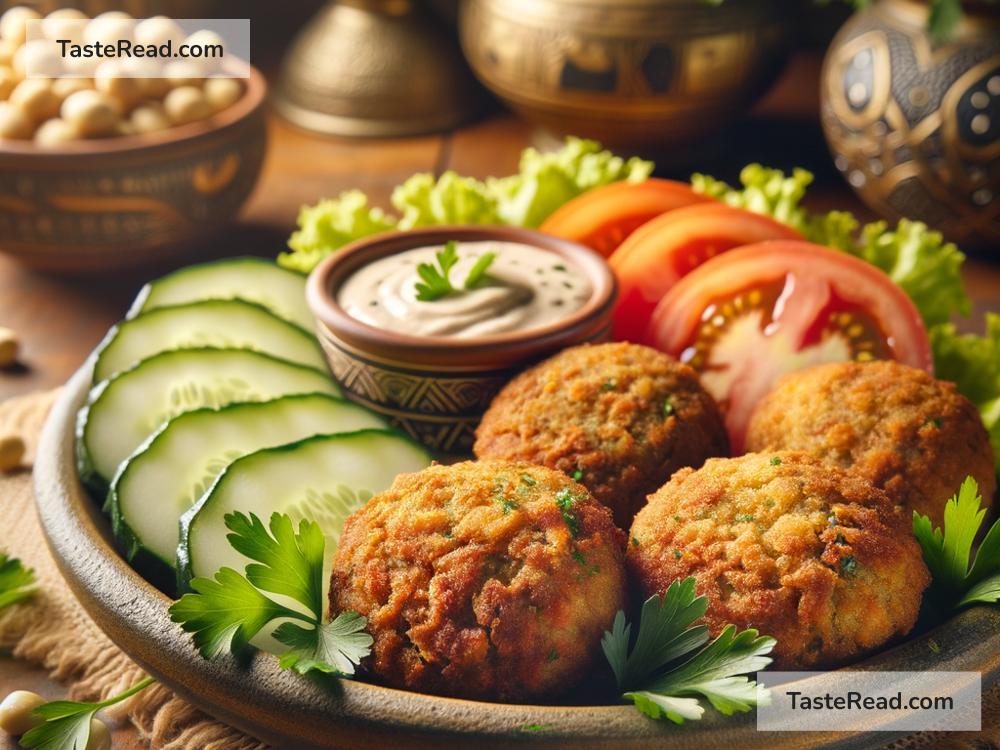Egyptian Falafel: A Tasty Tradition Passed Down Through Generations
There is nothing like the smell of freshly fried falafel sizzling in a pan and filling the air with a savory aroma. For many Egyptians, falafel is not just food; it’s tradition, comfort, and a delicious connection to their rich heritage. These golden, crispy delights have been passed down through generations, with every family adding their own unique twist to the recipe. In this blog, we’ll explore the special role falafel plays in Egyptian culture, its unique ingredients, and how this recipe has become a symbol of unity and flavor.
What Makes Egyptian Falafel Special?
Falafel, made from ground beans or chickpeas mixed with herbs and spices, is popular across the Middle East. You can find variations of this dish in Lebanon, Syria, Israel, and even in Western countries where it has become a street food favorite. However, Egyptian falafel, known locally as ta’ameya, is unique because it uses fava beans instead of chickpeas as the main ingredient. This small difference makes ta’ameya creamier on the inside while still maintaining the crisp, crunchy texture on the outside.
Fava beans have been a staple in Egyptian cooking for centuries, dating all the way back to ancient Egypt. Farmers grew fava beans because they were inexpensive, nutritious, and easy to cook. Over time, these beans became the base for one of Egypt’s most beloved foods—falafel.
A Dish That Connects Generations
For many Egyptian families, making falafel is more than just following a recipe; it’s a family tradition that brings people together. Mothers teach their daughters, fathers show their sons, and sometimes grandparents guide everyone in perfecting this flavorful dish. In most homes, falafel recipes are adapted to suit personal tastes. Some families add extra garlic, while others prefer a touch of chili for spiciness. Every household has its own secret ingredient or technique that distinguishes their falafel from anyone else’s.
Gathering in the kitchen to prepare falafel is often a time filled with laughter, storytelling, and bonding. It’s a joyful reminder that food is not just about filling your stomach—it’s about feeding your soul and preserving cultural identity.
The Secret Ingredients
What makes Egyptian falafel so irresistible? It’s all about the mix of fresh, flavorful ingredients used to make it. Traditionally, ta’ameya starts with soaked fava beans that are blended into a paste. Then, chopped herbs like parsley, cilantro, and green onions are added to brighten the flavor and create its signature green color. Garlic and spices such as cumin, coriander, and black pepper give the falafel its warm, aromatic kick.
Some families like to mix sesame seeds into the batter or sprinkle them on top before frying. This not only adds a nutty flavor but also a satisfying crunch. Another important ingredient is baking powder, which makes the falafel light and airy when fried.
Once everything is mixed, the batter is shaped into small balls or patties. These are fried until golden brown and served hot and crispy. The result? A perfect combination of textures—crispy outside and soft inside.
How to Eat Egyptian Falafel
Egyptian falafel can be enjoyed in many ways. Most people eat it as part of a traditional breakfast, alongside ful medames (mashed fava beans), eggs, and freshly baked pita bread. This hearty breakfast keeps people energized throughout the day, especially in a country where mornings can be busy and hectic.
Falafel is also a delicious snack or lunch item. It’s often served in warm pita bread stuffed with cucumbers, tomatoes, and tahini sauce. Some people like to add pickles or a drizzle of chili sauce for extra flavor. This portable meal is a favorite among street food vendors and office workers alike.
In recent years, falafel has gained global popularity as a vegetarian and vegan option. Many Egyptians living abroad bring their family recipes with them, introducing ta’ameya to friends and neighbors in their new communities.
Passing Down the Recipe
One of the most beautiful aspects of Egyptian falafel is how it is passed down from one generation to another. Each family treasures their falafel recipe, guarding it like a secret treasure while also sharing it with loved ones. In Egyptian homes, the younger generation often learns through watching and practicing. Parents encourage their children to roll the falafel balls, season the batter, or flip patties in the hot oil.
Many older Egyptians who now live abroad continue the tradition, teaching their children and grandchildren about the food they grew up with. This not only keeps culinary traditions alive but also helps families stay connected to their roots, no matter where they live.
A Dish Everyone Can Try
Whether you’re Egyptian or simply a food lover, falafel is a dish you can easily make at home. Its ingredients are simple and affordable, and once you get the hang of forming the patties, frying them becomes a breeze. You don’t have to be an expert chef to enjoy the magic of Egyptian falafel. Recipes can be adjusted to include chickpeas, spices of your choice, or toppings you think complement the dish.
To make Egyptian falafel, all you need is a little patience, some fresh ingredients, and a love for cooking. By doing so, you’re not just preparing a meal—you’re becoming part of a tradition that Egyptians cherish deeply.
Final Thoughts
Egyptian falafel, with its creamy fava bean base, fragrant herbs, and crispy texture, is more than just a dish. It’s a legacy that connects families and tells the story of Egypt’s vibrant culture and history. Whether you eat it on the streets of Cairo or make it in your own kitchen, falafel brings people together. Next time you bite into a piece of ta’ameya, remember the generations of Egyptians who have lovingly passed down their recipes, one falafel ball at a time.


